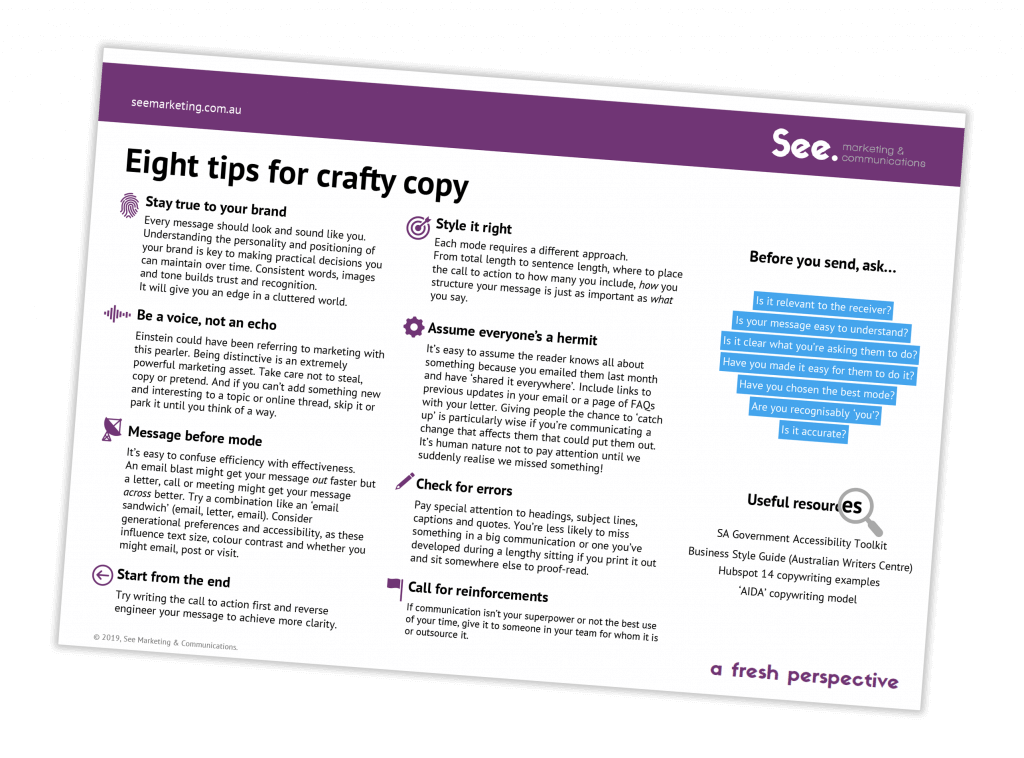I’ve been involved with many sponsorships across my career so I know a good one when I see it.
Many sponsorships get the first part right, alignment or ‘fit’. This is when there’s a relationship between the brands that makes sense. Insurance companies and Motorsport events, skin cancer charities and outdoor festivals, and business events where banks, law and accounting firms team up are just some of the common examples.
But too often, organisations worry about how big their logo will be on the flyer and where it will appear. They fail to recognise the sponsorship’s real value as a platform they can leverage to achieve a specific business goal.
Before I share tips for anyone who has (or is considering) sponsorship as part of their marketing mix, I want to share a recent impressive example of a sponsor who did it well.
I enjoy test cricket and was lucky to get to a few days of the Ashes last week. The spectacular Adelaide Oval has many things going for it. But anyone who’s sat in row BB in the Southern Stand will tell you these seats put you at eye-level with the stadium climbers and are not for people with vertigo.
I was commenting to a friend that the pink ball looked more like a pixel, when I spotted a electronic sign on the other side of the ground: “Gillette #closematters.”Nodding approval at the connection between the close shave of a razor and close shaves often seen in cricket (good fit), I cheekily sent a tweet to Gillette saying I’d noticed their sign and perhaps they’d be so kind to spot me a few seats closer to the action?
A short while later, I heard a radio ad for the competition Gillette was running on social media: share a pic of you and your friends from your nosebleed seats for a chance to win a spot in the Gillette upgrade zone.
I leaned forward and spotted four seats in front of the boundary fence. Their competition was so well conceived participating had been instinctive.
Several silly photos and attempts later, I scored an upgrade. Gillette’s sponsorship approach set them meaningfully apart from every other sponsor on the day. And it was easy to execute – two hosts on the ground, some soft drinks in the esky and someone in Sydney running the social media engagement component.
Gillette’s sponsorship approach set them meaningfully apart from every other sponsor that day at the Ashes.
As I sat back in the lounge chairs on the ground in Gillette’s ‘upgrade zone’, I felt a real buzz and reflected on how everything about the sponsorship just worked. Did I rush out and buy Gillette the very next day? No. Did my sentiment towards the Gillette brand shift? Absolutely, so much so that it inspired me to write an article.
Creating true distinctiveness is the marketing sweet-spot. But you don’t need Gillette-sized budget to do sponsorship well. Here are some questions every organisation should ask when they’re evaluating or renewing sponsorships.
- What do you want to achieve? Is it to build brand awareness? Showcase a product or service? Establish yourself in a new market? Change or reinforce existing perceptions? Increase staff engagement? Be really clear about what you need your sponsorship to enable because each of these influence the type of sponsorship opportunity you should focus on.
- How good is the fit? When people see you involved, will it make sense to them? Do the brands enhance each other or will people wonder what the relevance is? After the Ashes, I was sent a survey where I was asked to recall the names of sponsors and then rank them for relevance to cricket. I was able to recall only a handful and all of them were those I believed to be a relevant fit (even if they were brands in categories I personally didn’t use).
- Can you leverage it well? Sponsorship buys a platform to do more with. Sponsoring a business event and tickets part of the deal? Send your best people along and make sure they have a clear objective, whether it’s connecting with a specific person, or gathering content to publish on your blog. Sponsoring a festival? Plan an activation that people will remember. Jurlique uses WOMADelaide to get people to try their product by employing roaming ambassadors to spritz hot festival goers with their rose balancing mist. Bliss. If you aren’t prepared to invest more time and money into a sponsorship, it’s really not fair to blame the organisation for you not getting everything you want out of the relationship.
- Is it still good for you? If you’ve had long-term sponsorships, this point is for you. It’s easy to rollover sponsorships. Everyone knows each other and what else would you do anyway? I’ve recently worked with an organisation whose marketing mix was so dominated by sponsorships that it left no room for other things, like having an ‘always-on’ digital campaign. Sponsorships have to deliver meaningful results for both parties, so don’t be afraid to thoroughly evaluate what you’re getting and politely move on if that’s what your gut is telling you.
In summary, sponsorships can be great if they are a strategic fit and you can leverage them well. But they should be part of an evolving marketing mix. Be brave and try new things and remember, if you’re not confident doing it alone, get some external advice to help you clarify your goals and give you other ideas about how you can make your marketing budget work harder for you.
Seen a great sponsorship in action? Feel free to let me know by leaving a comment.




